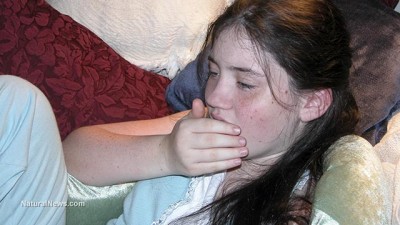Whooping Cough (Pertussis) Cases Rise in U.S. Due to Failed Vaccine Science: Study

The reason that cases of whooping cough have been on the rise in the United States is due not to fewer people vaccinating their children but to a decreased effectiveness of the vaccine itself, according to a study conducted by researchers from Monash University in Melbourne, Australia, and published in the journal PLOS Computational Biology on April 23.
Whooping cough, also known as pertussis, is named after the distinctive gasping, “whooping” noise that patients make while inhaling after the severe coughing fits caused by the disease.
In recent years, health experts have raised concerns that pertussis cases are on the rise. Between 1965 and 2002, there were an average of about 10,000 cases per year in the United States. In recent years, that number has risen to about 29,000 per year, with a high of 48,000 in 2012.
The mystery of rising pertussis rates
In the new study, the researchers applied mathematical models to a massive data set containing information on U.S. pertussis cases between 1950 and 2009 to test the various hypotheses posed to explain rising disease rates. The explanations tested included lower vaccination rates, improved diagnosis (either through increased awareness or more accurate diagnostic tests), and a change in the vaccine formula that took place in 1991.
Prior to 1991, the pertussis vaccine was made from the killed body of the bacterium Bordetella pertussis, which causes the disease. But this vaccine sometimes led to severe convulsions, caused by fever and brain inflammation. Concern over these side effects led to the development, in 1991, of an “acellular” vaccine, which does not contain killed bacterial bodies and should therefore have a lower rate of side effects. The acellular vaccine was adopted in the United States in the 1990s.
The acellular vaccine is known to be less effective, however, having only an 80 percent effectiveness rate, compared with 90 percent for the (discontinued) whole-cell vaccine.
Vaccine — not vaccine refusers — to blame
The researchers analyzed the duration of the acellular vaccine and found that on average it confers immunity for 50 years. In a small number of people, however, the protection wears off significantly faster. This small change, combined with the 10 percent decrease in effectiveness, was enough to explain the change in pertussis prevalence over the past two decades.
The researchers found further evidence in the fact that the demographic most infected by pertussis has changed from adolescents to children between the ages of 7 and 10.
“The lower level of protection of this group of kids is well explained by the fact that they were among the first group to be entirely vaccinated by the acellular vaccine,” lead researcher Manoj Gambhir said.
Mathematical modeling failed to support any of the other hypotheses offered as explanations for increased pertussis cases.
This means, of course, that parents who choose not to give their children the DTaP vaccine are not to blame for rising pertussis rates. Instead, a change in the vaccine itself wholly explains the recent increase.
Don’t expect the study to lead to any changes in the direction of U.S. vaccine policy, however. Even though the analysis found that the acellular vaccine provides protection for 50 years, the researchers suggested that perhaps booster shots should be given every 10.
The study might also be used as an excuse for still more vaccine research and development. According to Dr. Pritish Tosh of the Mayo Vaccine Research Group, who was not involved in the study, the findings suggest that researchers need to develop still a third variety of pertussis vaccine, to solve the problems with the first (whole-cell) and second (acellular) types.
Sources:

